Update: Have you crashed on the tram lines? You can now report it online, here, at tramcrash.co.uk
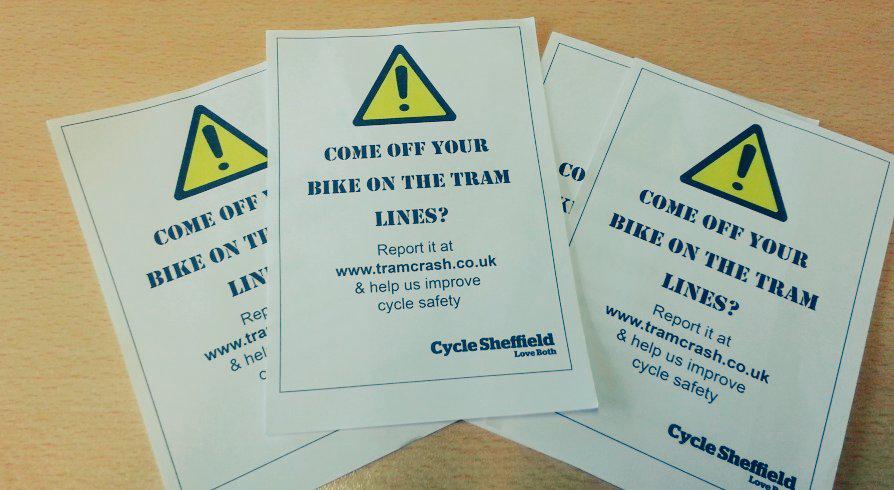
We have a tram network in Sheffield known as the Supertram, it opened in 1994 and has 35km of track with about 50% of this on normal streets shared with normal vehicles.
If there’s one thing to know about riding a bike on tram lines, it’s that you must NEVER get your wheel stuck in the tram line, you are very very likely to be thrown off.
It has been estimated that there are a minimum of 33 accidents per annum where cyclists have difficulties with tram tracks, and over 50% are serious in nature (An Investigation Into Cyclist Safety on the Supertram Network In Sheffield, South Yorkshire, Sheffield City Council, December 1998). These figures were calculated using data from 1994 to 1998, the numbers of people cycling has more than doubled since then so the number of accidents may have increased.
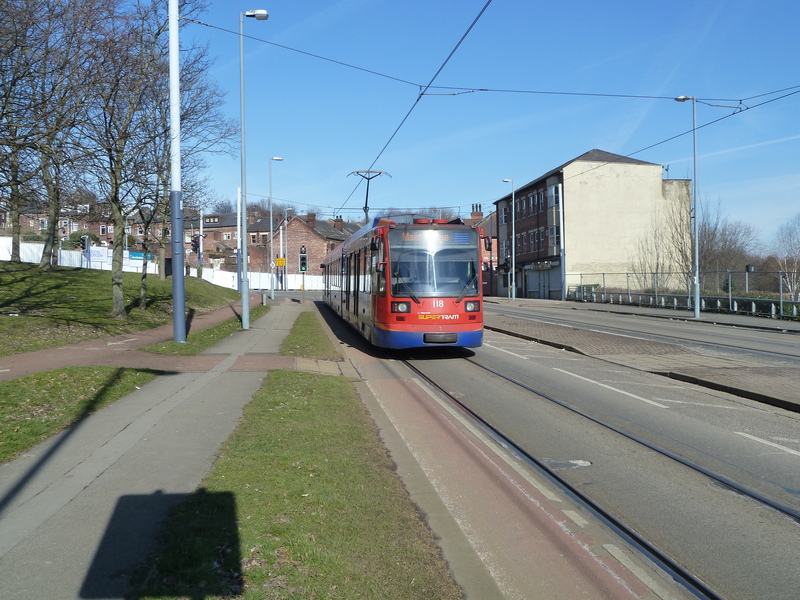
The on street sections are difficult for use by cyclists, a typical tram track on a street has a 1.1m gap between the kerb and the left most rail. A Sheffield City Council report from 1998 states that
A width of 1.1m is within DETR guidelines for advisory cycle lanes and similar widths have been used successfully in the past. It is acceptable then as a reasonable width for cyclists to have to use.
It goes on to say that
It is well known that this area on a carriageway nearest to the kerb,is less than ideal as the preferred position for riding a bicycle. Cyclists are required to navigate through litter, everyday road detritus, uneven surfaces due to badly levelled or positioned gullies, badly applied zig-zag and yellow lines and potholes, whilst also avoiding the hazards of left turning and parking vehicles and car doors opening from vehicles already parked.
An Investigation Into Cyclist Safety on the Supertram Network In Sheffield, South Yorkshire, Sheffield City Council, December 1998
What wasn’t stated though is it’s important for cyclists to be able to take a primary position where the road narrows or there isn’t space to do this. To do this you must cross the tram line at a narrow angle, and this can be very dangerous.
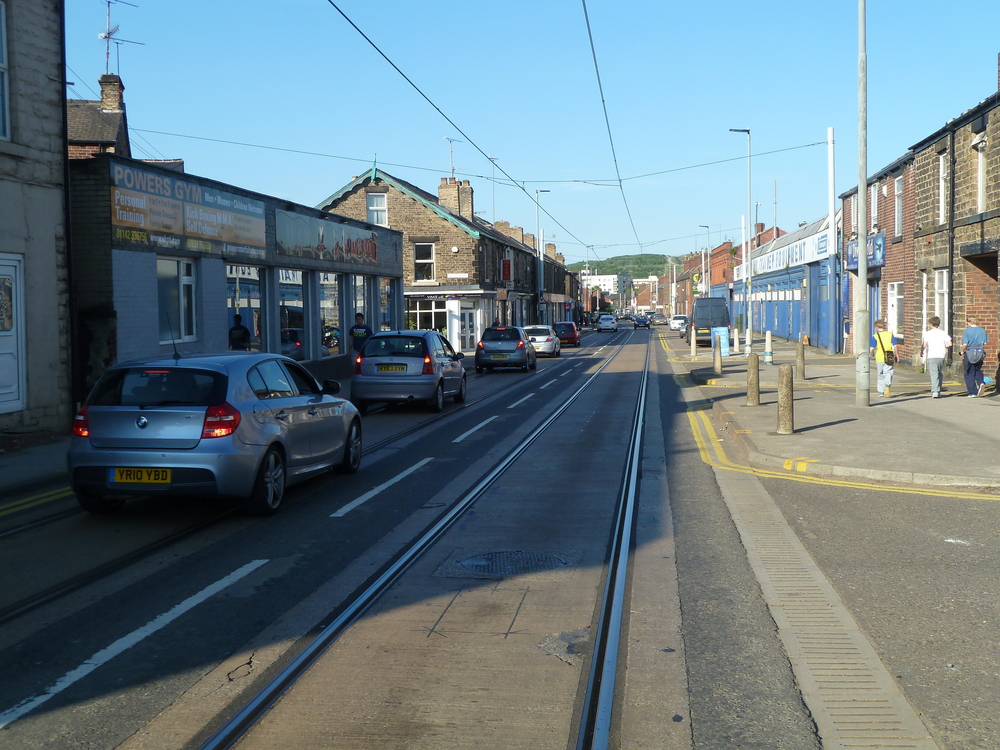
Tram stops are a nasty periodic danger, they are built out into the road so there is no gap when people board a tram. This buildout narrows the available space to the left of the track to about 35cm.
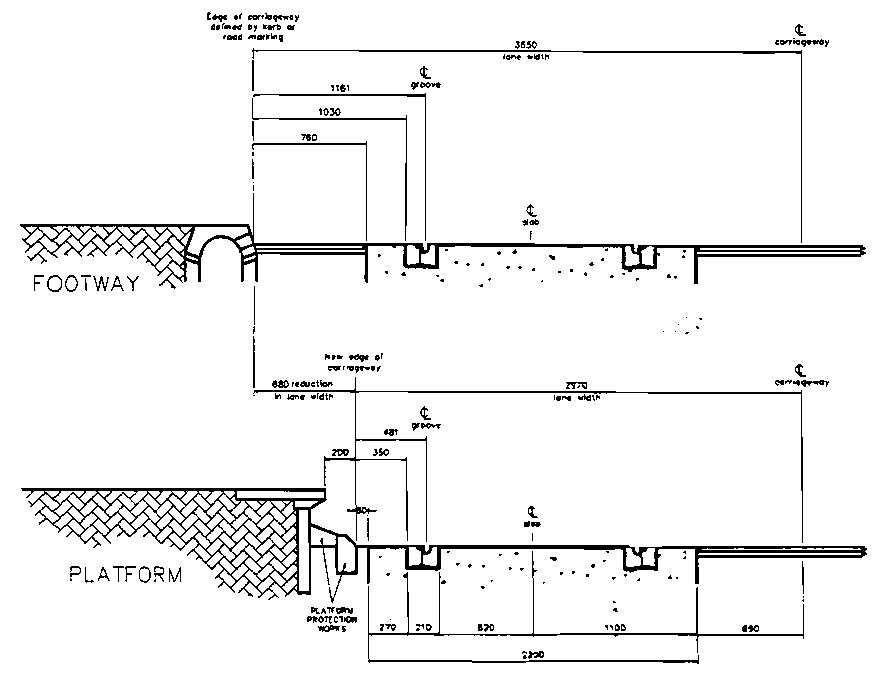
On a bike you need to either move out into the middle of the tracks or risk crashing into them by going up the inside, like the guy in this photo does.
This is an often quoted problem that cyclists face on the tram network, that at regular intervals along a route they are forced to move out in front of other traffic whilst negotiating crossing the tram tracks.
An Investigation Into Cyclist Safety on the Supertram Network In Sheffield, South Yorkshire, Sheffield City Council, December 1998
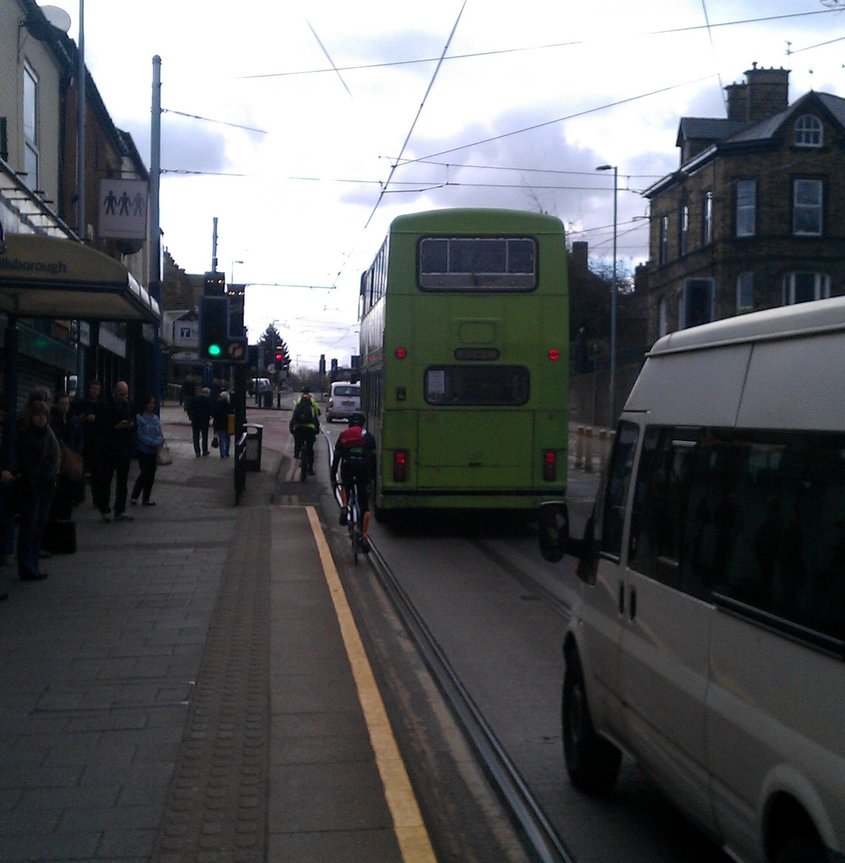
Trams cannot pass people on bicycles, there is not enough room as the trams and tracks are designed to sweep within 38cm of the kerbline, known at gutter running.
The tram is unable to move out and the cyclist is unable to move in. Advice from Stagecoach who run the trams to cyclists is “get off the road”.
Supertram publicity leaflets suggest in their advice to cyclists, “when a tram is approaching move clear of the tramway”, and Supertram spokesmen have publicly supported this opinion.
An Investigation Into Cyclist Safety on the Supertram Network In Sheffield, South Yorkshire, Sheffield City Council, December 1998
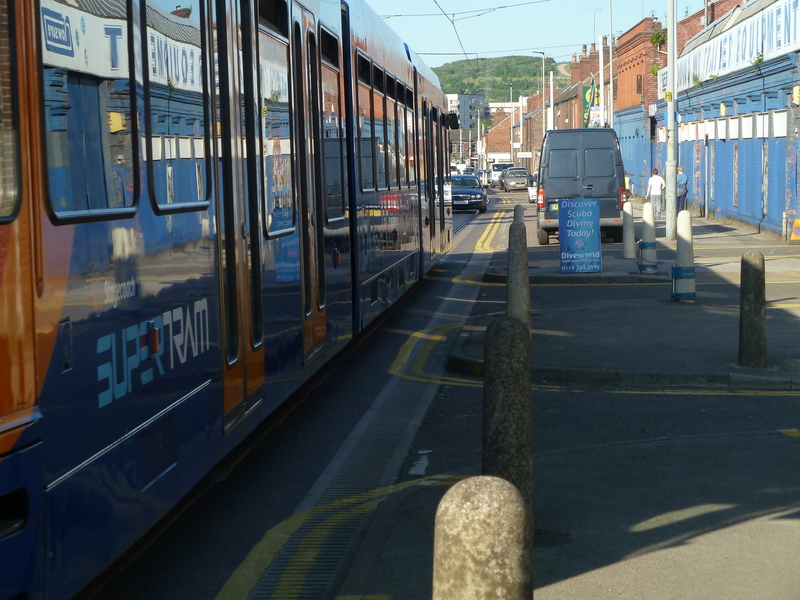
This has lead to problems with bullying when trams come up behind cyclists.
Some cyclists however, have experienced problems when they have found themselves ahead of a tram. Reports suggest that some cyclists have been bullied by Supertram drivers who have expected the cyclist to pull over, stop and allow the tram to pass.
Supertram drivers have been accused of intimidating cyclists in this manner by sounding the warning bell, driving very close behind and attempting to pass without sufficient room. These actions have forced”cyclists to stop for fear of serious injury.
An Investigation Into Cyclist Safety on the Supertram Network In Sheffield, South Yorkshire, Sheffield City Council, December 1998
The report makes it clear that trams have no priority over bicycles as we would expect.
It should be reiterated that the tram has no right to this supposed priority and that, assuming no vehicles are prohibited by Traffic Regulation Order, all vehicles have an equal right to use the carriageway.
An Investigation Into Cyclist Safety on the Supertram Network In Sheffield, South Yorkshire, Sheffield City Council, December 1998
The tram lines have been in place for almost 20 years and no good solutions have been found. There is a cycle track along about 150m of tramway, but this is the only example. There are plans afoot to extend then tram network further into the City Centre along designated bicycle routes. There are also plans to replace the rails which those of a different design – this impact on cyclists is not clear.
So, when in Sheffield on a bike and you come across a tram line, find an alternative route.
Cyclists need access to high amenity areas in a similar way that pedestrians do. The Supertram route often passes along the main road through these areas and thus alternative, useful routes are difficult to locate. Encouraging cyclists to use alternative routes is likely to take them away from the areas they wish to access and may therefore be of limited safety benefit.
An Investigation Into Cyclist Safety on the Supertram Network In Sheffield, South Yorkshire, Sheffield City Council, December 1998
The report I’ve been quoting from is available here.